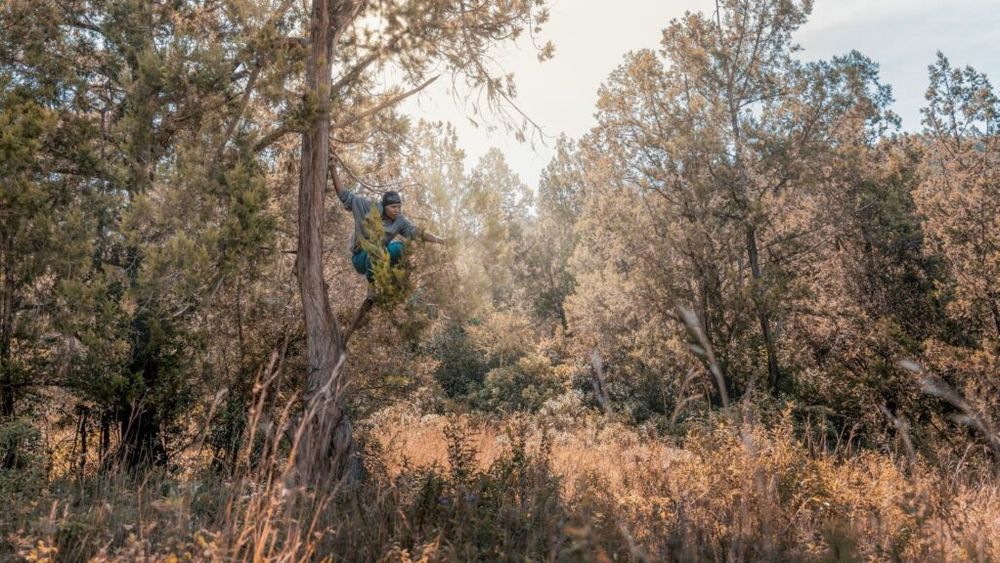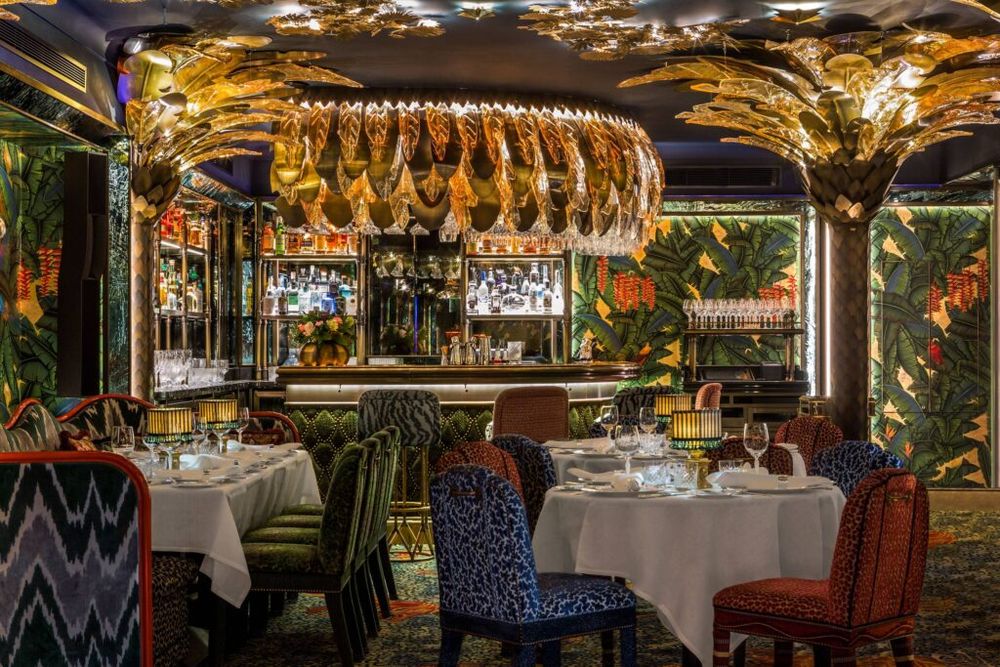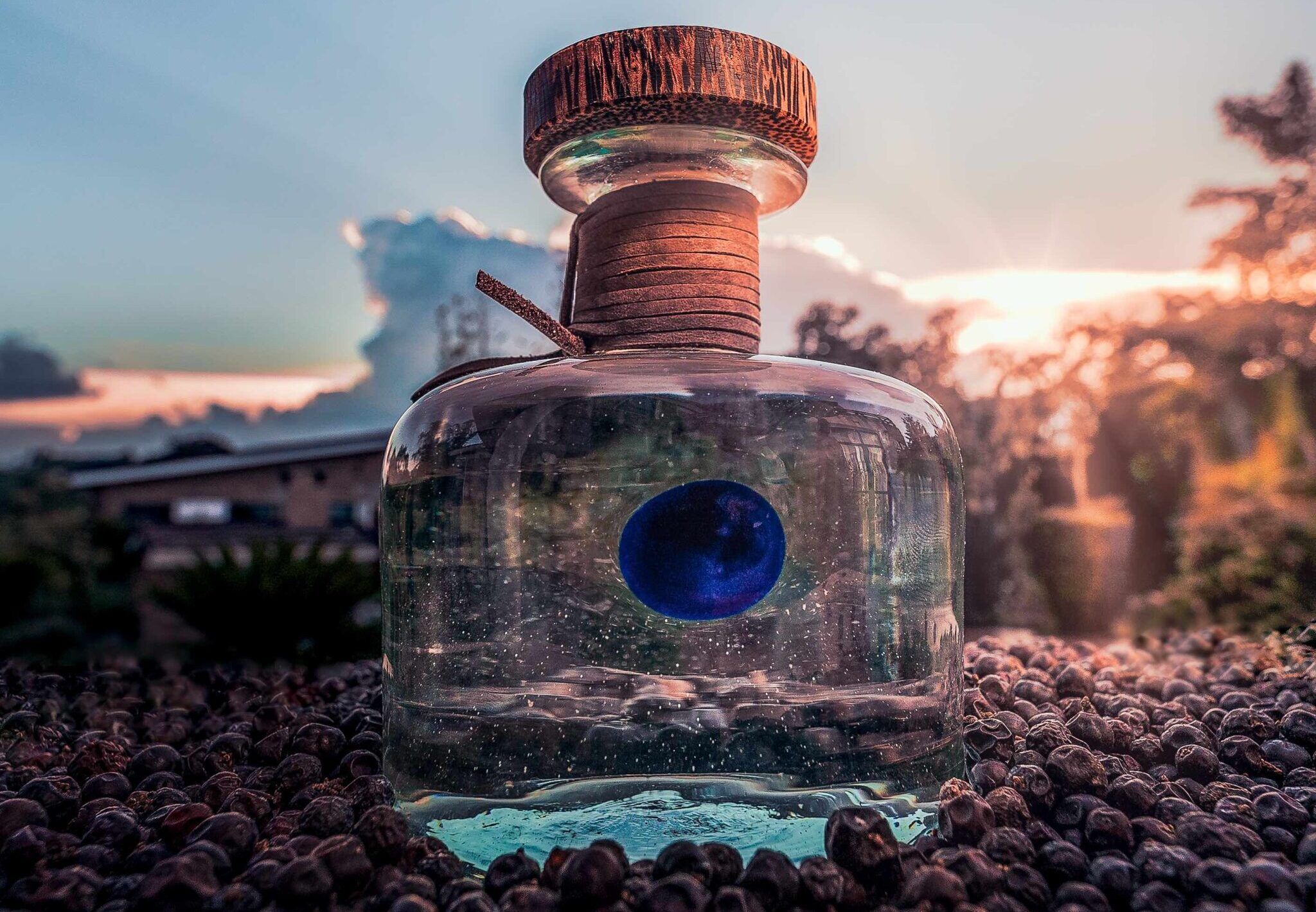Procera does not come cheap. In fact it’s most limited edition brand costs over £100 retail, but it is very much worth it, claims new UK partner and investor Ivan Dixon as he explains to Richard Siddle.
By his own admission it takes a lot for Ivan Dixon to get excited about a new drinks launch. It’s not that he is not interested in discovering something new and different, far from it, it’s just that he’s heard the same brand pitches just a little too often.
But he also knows a quality a drink, with a genuinely breakthrough brand story, when he sees one. Which is very much what he felt when he first saw Procera at the Junipalooza trade show in 2018. He was so smitten with the taste, look, feel and back story that he immediately took it on at Enotria&Coe, even though its price was out of the league of the majority of best selling gins on the market.
“When I first saw, I just loved the look and feel of the brand and then was just blown away when I tasted it,” recalls Dixon. “It just had a real aura about it and stood out as being really exciting.”
It wasn’t just the gin he liked but the people behind what he thinks is one of the most genuinely different and inspiring drinks story he has come across.

Guy Brennan has moved from high finance to quality craft distilling with Procera gin
Guy Brennan, is the founder of Procera gin, whose journey into drinks is a relatively simple one. An Australian micro-finance man living in Nairobi who had the vision to say let’s stop sending botanicals grown in Africa to Europe and the UK to make gins there, let’s use those botanicals and local ingredients to make authentic African gins crafted in the same country. The key ingredient being, the procera juniper, or African juniper as it is known.
But whilst he might know his way around African businesses, he had no idea how to make gin. So he travelled to meet South Africa’s leading master distiller, Roger Jorgensen, and persuaded him to come on board to create Kenya’s first craft distillery. And Procera was born.
The fact Dixon had already forged close ties with Brennan and Jorgensen, during his time working with the brand at Enotria&Coe, meant it was an easier conversation for them to have when it was suggested Dixon joined the team after he had parted ways from Enotria at the start of the covid pandemic last March.
“I felt like a really good fit, particularly considering the passion I naturally had for the brand from the first time I saw it,” says Dixon. “I like to think I know a good brand when I see it. This, compared to all the 100s of London Dry and flavoured gins out there, is bold, different and exciting.”
Investing in Procera
Enough to convince Dixon to take up Procera’s offer and move from being a buyer and dictator of what ends on a drinks list, to working for a start up spirits brand looking to make it on to the kind of lists he used to control.

Ivan Dixon is now fully committed to the brand with his own personal investment
Believing in the brand is one thing. Investing in it is quite another. “It was not a difficult decision to make considering where the brand is going and what our forward planning is,” he explains. “It’s a hugely ambitious project, and I have never been involved in anything as creative and fast moving. It’s the first time I have invested in a brand, but this has such a unique story behind it I can see it taking big steps very quickly. It certainly impassioned me to have some ownership in it.”
He also concedes the fact he has been convinced enough – Victor Kiam style – to invest in a brand he loves “does give a bit of weight about it” when talking to potential customers.
“I also know I can use my buying experience to get a sense of the level of profits we need to be making. After all, I would not have made the decision to import it with Enotria&Coe if I did not think it was going to be a success.”
What makes it so different?
(This video explains why Procera is trying to showcase “the best of Africa” in its gin)
Anyone who has been to Africa will know just how striking its unique flora and fauna is with 1,000s of plants, ferns, trees and flowers that you simply can’t find anywhere else in the world. Like the procera juniper that gives Procera its DNA
“Most junipers used in gin,” explains Dixon, “have been dried and stored”. The procera junipers in the gin are picked fresh, from huge, tall trees in the Kijabe forest, some 50 miles from the distillery in Kenya – the first craft distillery in the country.
He admits you “don’t associate Kenya with gin,” and if you did you would not necessarily think it could produce such a quality product. But that all comes back to the unique characteristics of the procera juniper.
Like with grapes and vines it all comes down to the climate, soils, and altitude. The procera junipers are grown at high altitude – 2,200 metres – in a sun-drenched, equatorial climate, that combine to give the juniper a distinctive nutty and earthy flavour. This compares to a typical juniper grown in temperate zones with it is only hot for three months of the year, compared to the seven hours a day year round that a procera juniper receives.

All the junipers are hand picked from Kenya’s Kijabe forest
The team know it is the right time to pick the procera berries when baboons appear after the season’s short rains hoping for their fill. They are harvested ripe and green when they are at their most fresh and sweetest.
“They are huge berries, like mini marbles,” says Dixon. “You can crush them in your hand. I have never seen that before and I have been on a lot of gin tours.”
As Jorgensen, says on the brand’s website: “My whole career I’ve been striving to make the perfect martini gin. When we distilled that first handful of fresh, green Procera berries, I knew immediately that African juniper was going to change the world of gin.”
It’s not just the procera juniper that gives the gins their striking fresh, citrus flavours but the wide range of botanicals sourced from across Africa including Kenyan pink peppercorns, Swahili limes, Moroccan coriander, cardamom and mace from Zanzibar, Selim Pepper from Nigeria, and Somali acacia honey.

Respected African distiller Roger Jorgensen has brought his 30 years of experience to the Procera team
Jorgensen makes the gin in Müller 230L Aromat pot still using his own self-taught “secret” technique, honed over 30 years of making spirits in Africa.
The long term goal of the brand is to create a distinct, separate category for African dry gin, which must be distilled in Africa using only African juniper berries. Which, in turn, would help with reforestation projects to protect and grow the Juniperus procera trees from which procera junipers come from.
A key aspect of the brand moving forward will be how it can re-invest in the local communities where the procera juniper comes from and make sure they are protected and promoted, and look to create extra employment in the region. Procera has committed to plant one Juniperus Procera tree for every bottle sold and is currently on-track to plant its 10,oooth tree in the Kijabe forest before the end of he year.
“It gives it all a 360 degree story,” says Dixon.
Buyer to supplier

There is nothing else with the backstory of Procera competing at the super premium end of the gin category, claims Ivan Dixon
So how is he finding it on the other side of the buyer and supplier fence? He concedes that the price point – with a starting position of around £70 retail – might put off some accounts. But he is quick to challenge that way of thinking by looking back to his days at Harvey Nichols, when he felt like he had a dearth of super premium quality gins that could command the kind of prices that whisky drinkers do not think twice about when buying a single malt.
“When I had gins on sale for £50 to £60 at Harvey Nichols they always sold well,” he adds. “Look at whisky where you can have brands that sell at £35 or £35,000.”
The drinks industry, he says, is constantly asking whether the gin boom is over, but he says at the super premium end it has barely just started. What we have done, he says, is create a category where the majority of gin brands sit in the £15 to £35 bracket and it’s hard to find any brand that is giving good enough reason to go higher than that.
Super premiumising gin
He believes Procera not only does that, but can really help stretch the category in the same way that premium malts have done. “This is what the gin category needs. It needs to be stretched. If you have mainstream gins selling at £20 to £24 and premium gins up to around £45, then where do you go next?”
He strongly believes gin lovers are ready to embrace brands that allow them what he terms as an “affordable luxury”. The kind of gins they are happy to buy when ordering at the Connaught Bar or the famous Dukes Hotel, where they simply ask for the “best bottle”.
“People want a story and are willing to spend more to get it. In fact they will get upset if they feel they can’t get the best from you.”

Bars like Dukes in Mayfari are looking for super premium gins they can introduce to their customers, says Ivan Dixon
He adds: “The price of Procera gin means it is only going to appeal to a pretty finite amount of people, which in a way makes it a bit easier to target it just at them.”
Dixon remembers the time when he took a risk on listing Monkey 47, the premium gin brand from Germany, and a forerunner for ultra-premium products within the category. “We sold out within a week could not get any more stock. There is a market out there for these kind of products and there is certainly a place for top end gins.”
Dixon also recalls the success of a (then) unheard brand called Forest Gin. “People thought I was crazy for listing a gin that sold on the shelves for £60, but it went on to be the company’s biggest selling spirit product in 2018.
“People are looking for something a bit more aspirational, particular the younger market, who are perhaps more willing to experiment with a premium gin from Kenya. That is where the trends are pointing.”
He cites the work it has been doing with Master of Malt to really get behind the band with good content as well as the products themselves. “It has produced some blogs that have really helped tell the story. Consumers want to get under the skin of a brand. Online has been a really good way to do that as well.”
Soft launch
He says it has been frustrating to some extent not being able to get out to see potential on-trade customers, and show and taste the brand with key bars and their staff, but then it has also given him and the team in Kenya to “get the positioning just right”. He hopes a few months of “soft launch” will help generate a “ripple effect” in the trade and amongst the key bars about why Procera is so different.
“It has been an interesting challenge and we don’t know even now how the on-trade is going to come back. But it’s the time to find solutions and have a strong compelling interesting range for when bars are open. We need to be in a strong position and hit it hard then.”
It also means being selective in terms of which customers to work with. “The last thing we want to see is it being on a shelf and not getting any rotation. We are only talking to people where we think it can genuinely work.”
It is not as if he is starting from scratch as the brand is still distributed by Enotria&Coe and Dixon is still working closely with its spirits team and the accounts it has been able to bring on board.

The exclusive Annabel’s private club has asked for personalised bottles of Procera for its VIP guests
He says when he first showed it – with E&C- to the trade “it went crazy”. “We did it the old fashioned way. We went into high end venues where we wanted to be with a bottle and a story and we converted listings off the back of it,” he explains. “Dukes Hotel has been smashing through it, and Annabel’s came to us asking if we could personalise 50 bottles for its VIP guests.”
Dixon adds: “We managed to get ourselves in front of the right bar teams and they all agreed it was something different and they had not tasted before.”

Alessandro Palazzi from Dukes bar in Mayfair describes Procera as his “desert island” gin for a martini
The accolades for the gin speak for themselves. Alessandro Palazzi, the iconic head bar man at Duke’s Hotel says: “If I could only take one gin to a desert island for my martini it would be Procera.”
Dixon adds: “The position we have managed to get to in year one in is pretty phenomenal,” he adds, particularly as it does not have the scale or budget to be be paying listing or promotional fees.
We can also expect to see other brand launches in the years ahead with work going on to develop a future Kenyan-style rum along with an African agave spirit.
The brand will also develop hand in hand with its international exports, says Dixon, to see what new styles work in different countries. As well as London and the UK, it has so far found listings in New York, Hong Kong, Singapore, Australia and cities across Europe. “We want to be able to show the terroir of Africa through different styles,” he says.
The taste test

Put to the test: Joe Wadsack and Richard Siddle and put through their paces by Ivan Dixon
The Buyer had the chance to taste through three gins in the range – the original (the Blue Dot), the limited edition Red Dot 2021 and the New Dot – with drinks writer, broadcaster and all round drinks expert, Joe Wadsack, who is also part owner of the Reverend Hubert winter gin liqueur.
Dixon was keen to get Wadsack’s take on the gin as he sees him like a good A&R rep in the music industry, and has the ability to really identify what it is about a new brand that makes it stand – or not.
Wadsack certainly did not disappoint when it came to describing what the combined effect of the three gins are: “It’s like being in a perfume shop,” such is the unique quality of the Procera juniper.
Perfect serve
The gins are all being sold with their own African salt, made at the distillery from the botanicals in each style of gin. The idea being that you can create your own style and serve of Procera. Similar to how Hendrick’s made such a breakthrough with the idea of using cucumber in a gin serve.
Dixon says that of the three styles of gin, the Blue Dot is best served as a martini, where you can taste and enjoy the pure gin spirit. “It’s the DNA of what procera is about,” he says.
“There is a real vibrancy that comes through,” says Wadsack. “It’s like when you drink beer in Munich and you can taste the freshness of the hops. It has just a pure distillate. What I would call a fully orchestrated gin. There is a wonderful perfume to it. It’s a seriously exciting gin.”
Dixon reveals the distillate actually comes from Kenyan sugar cane, which helps with the touches of sweetness and viscous mouth-feel. “It helps keep the flavours super personified and delicate, and no harsh edges.”

Joe Wadsack says the aromas from the gins say it is like being in a “perfume shop”
He actually advises against using Blue Dot in a gin and tonic as it will be overpowered by the tonic water – or to use a sprinkle or two of salt to compensate. Instead the Red Dot, has been developed, with a stronger botanical mix (up to 156), that has been designed with Negronis, Red Snapper and Martinez’s in mind, he says.
“The salt addition personifies what is happening with the botanicals in the gin. When you put the salt and gin together it’s like a double whammy. It turbo charges the drink. It’s also a nice bit of theatre and allows people to personalise their drink to how they like it.”
Different Dots
The Red Dot 2021 Vintage is expected to be a limited Vintage release, with only a small amount of numbered, hand engraved bottles coming to the UK in October or November, at a higher price point than the Blue Dot, it will come in a 700ml bottle rather than the 500ml for the Blue Dot.
It has an abv of 51% and there is genuine spice and peppers on the palate, which come from five different types of African pepper. It also has a tomato, umami character to it.
Then there is a third style, New Dot, expected to retail at the top price in the range, which is bottled at 47%, also in a 700ml bottle which only uses juniper berries, juniper bark and juniper foliage, which really brings out the bark in the procera tree and has a husky finish, reminiscent of the bark from a coconut. “It’s like chewing on a juniper berry,” says Wadsack.
Dixon says the idea is to show what a gin can taste like when it is a “one tree expression”. As close to the wild landscape of Africa as you can get in a glass.
Which as gin recommendations go whilst standing wondering what gin to order really does take the bar up a notch up or two.
- If you would like to know more about Procera go to its website here.
- UK distributor is Enotria&Coe.
- You can contact Ivan Dixon at ivan@proceragin.com.










































